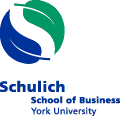
Central European University Business School, CEU, Budapest - Hungary
The CEU Graduate School of Business was established in 1988, formerly known as IMC- International Management Center, by a group of visionary leaders; including philanthropist George Soros and Hungarian entrepreneur Sándor Demján. It was the first educational institution in the CEE region to train managers by offering a western graduate business program leading to an MBA degree from prestigious western schools. Since its inception, the school has pursued the goal of developing standards in line with western institutions, while ensuring timely and relevant consideration of the changes within the region's transforming economies. After 12 years of granting joint degrees, IMC joined Central European University, as an integral part of the institution, but remaining a legally independent, separately registered entity. Its name was officially changed to CEU Graduate School of Business in September of 2002. A recent achievement has been its partnership with Purdue university, Tilburg University in the Netherlands and the European School of Management in Paris to jointly delivery the prestigious internationally recognized Executive MBA (EMBA) that is ranked 14th in the world by Business Week.
Location
The CEU Graduate School of Business is conveniently located in downtown Budapest. Budapest is the political, cultural, intellectual and economic center of Hungary. The city incorporates the architectural elegance of nineteenth century Habsburg era buildings, fin de siecle, art nouveau and art deco styles, with the urban character of a sprawling metropolis.
Budapest is divided by the Danube River, which separates Buda from Pest. Buda, the older section of the city, contains most of the medieval and Roman areas, cultural attractions and monuments. Pest is a thriving commercial and administrative center, brimming with restaurants, cafés, clubs, shops and offices.
Budapest offers something for everyone. For those interested in music, the State Opera House and the Ferenc Liszt Music Academy produce world-class operas and concerts. Theatre can be enjoyed at the Madach and Nemzeti theatres as well as a variety of small venues around the city offering both contemporary and classical repertoires in several languages. The city is home to numerous museums, including the Museum of Fine Arts, the Mucsarnok Art Gallery, the National Museum and the Museum of Applied Arts. Sporting enthusiasts will find numerous opportunities to watch or participate in European football, basketball, hockey and other competitive athletics. Budapest also offers many pleasant areas for bicycling, running, roller-blading or hiking.
The city boasts numerous modern cinemas, cafés, pubs, disco and rock clubs, where students can enjoy their free time. Several English-language newspapers advertise a variety of cultural and entertainment events around the country.
The CEU educational buildings are located in the heart of the capital. These buildings include educational facilities and administrative offices. The main buildings of CEU consist of two monument buildings and a newly constructed faculty tower. One of the monument buildings of particular historical importance is a palace built for the Festetics family, which had a leading role in the history of the Central and Eastern European countries from the 18th century onwards. The palace was designed by Mihaly Pollack, one of the most famous architects of Central and Eastern Europe. For its careful renovation of the palace, CEU received the "Urban Rehabilitation of 1995" award from the Architects Association. A modern, ten-story faculty tower was constructed behind the two monument buildings and now houses most of the university’s faculty offices and classrooms. The tower is also the site of the library and the university auditorium; an amphitheatre-style lecture hall. The Oktober 6 building, which is linked to the rest of the CEU complex, houses two of the university’s departments.
Approximate Term Dates
Fall Term: Module I: Early September – Late October, Orientation: Early September
Module II: Early November – Mid December
Winter Term: Module III: Early January – Late February, Orientation: Early January
Module IV: Late February – Mid April
Summer Term: Module V: Late April – Mid June
Module VI: Mid June – Late July
Academic Information
The MBA program operates in modules. There are 6 modules in one academic year. Exchange students will attend Module I & II (Fall Term), Module III & IV (Winter Term), or Module V & VI (Summer Term).
Areas of concentration include: Accounting, Corporate Finance, Quantitative Methods, Business Economics, Marketing and Organizational Behaviour.
Credit Equivalency
4 CEU courses = 12 SSB credits
5 CEU courses = 15 SSB credits
Language
All courses are taught in English.
Computer Facilities
The computer lab is equipped with 14 work-stations complemented by a further 14 PCs placed in the library and study rooms for student use.
Accommodation
The GSB is located in downtown Budapest where plenty of apartments are in the immediate area. Housing may be available for GSB exchange students in the CEU Residence and Conference Centre for a semester, if space is available. For more information please visit www.ceu.hu
Health Insurance
It is required to show proof of medical/health insurance upon arrival. The University Health Coverage can be purchased at CEU.
Visa
Information can be found at:
121 Bloor East, Toronto, ON, M4W 3R8, phone: 416-923-8981
http://www.docuweb.ca/Hungary (Embassy Web site)
Further Research
For more information about this partnership school, see the exchange literature available in the Schulich Exchange Reference Library located in room W265, SSB or visit their Web site at: www.gsb.ceu.hu.